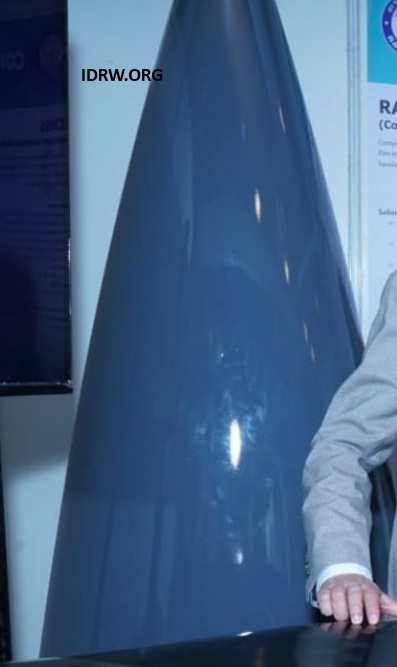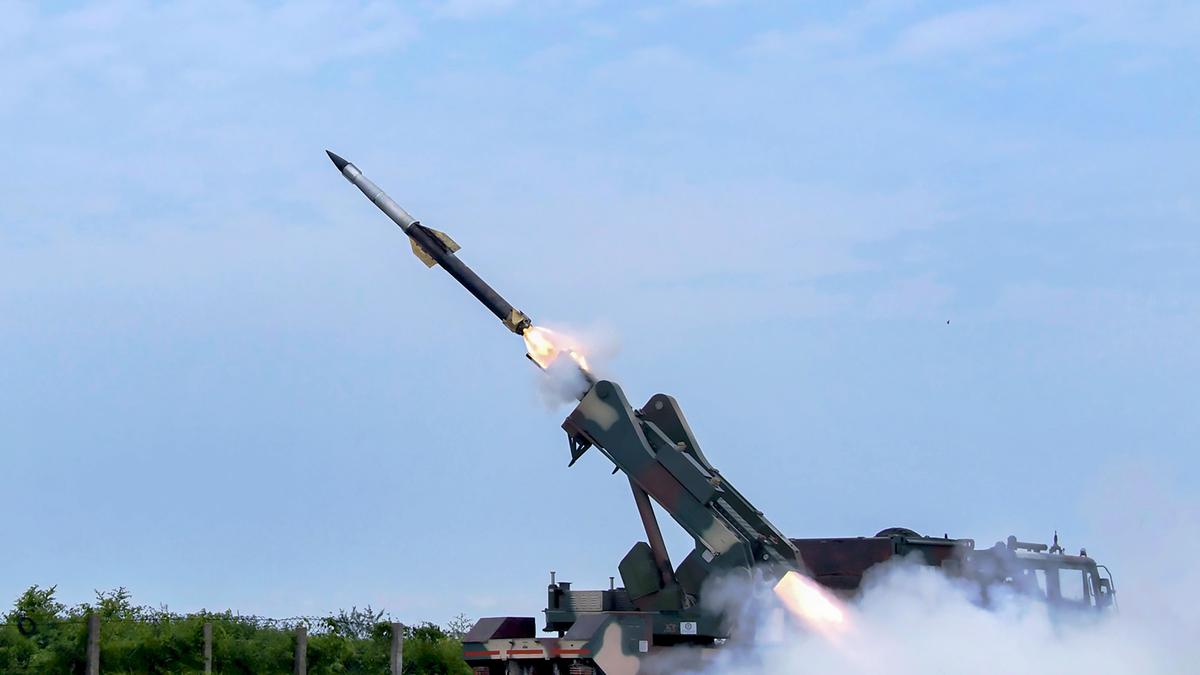Monthly Archives: February 2025
SOURCE: IDRW.ORG


As U.S. President Donald Trump pushed for India to buy more American weapons, the Indian Air Force (IAF) found itself under increasing pressure to procure U.S. fighter jets. The expectation was that such a purchase would facilitate concessions from the Trump administration in broader trade negotiations. However, the options available to India—Lockheed Martin’s F-21 and Boeing’s F-15EX—pose significant strategic and operational concerns for the IAF.
The F-21 and F-15EX, though modernized, originate from designs developed nearly five decades ago. While both aircraft have undergone substantial upgrades to remain relevant in modern warfare, they do not match the stealth and technological superiority of China’s J-35A or J-20 fifth-generation fighters. Given that Pakistan may eventually field Chinese stealth fighters, India is wary of procuring jets that do not provide a technological edge over its adversaries.
Continue readingSOURCE: IDRW.ORG


Manoj Jain, the Chairman and Managing Director of Bharat Electronics Limited (BEL), a Navratna Defence Public Sector Undertaking, has shed light on the anticipated defense collaboration with Russia involving a long-range early warning radar system. Speaking recently, Jain confirmed that the deal is structured at the government-to-government (G2G) level, emphasizing that while the broad framework is in place, the specific role of BEL in the project is yet to be crystallized and will be determined by the Ministry of Defence (MoD).
The deal, which has been making headlines, is speculated to be worth around $4 billion. A significant aspect of this agreement includes a commitment to local manufacturing, with at least 60% of the radar system expected to be produced in India. This aligns with India’s ‘Make in India’ initiative, aiming to bolster domestic defense capabilities while fostering technology transfers and reducing reliance on foreign systems.
Continue readingSOURCE: AFI


The debate around India’s fighter jet procurement strategy, particularly concerning the Rafale aircraft from France, has often centered on cost-effectiveness and technological sovereignty. One intriguing angle is the potential of reverse engineering aspects of the Rafale into the Twin Engine Deck-Based Fighter (TEDBF) project, which could offer significant cost savings compared to outright purchasing 110 more Rafale jets for the Indian Air Force (IAF).
The cost of acquiring 36 Rafale jets was approximately €7.87 billion, translating to about $8.7 billion or roughly $241 million per jet, including all associated costs like weapon systems and training. Extrapolating this for 110 jets, adjusted for inflation and additional customisations, could push the total expenditure well beyond current estimates, potentially into the tens of billions of dollars.
Continue readingSOURCE: AFI


The Indian Air Force’s (IAF) pursuit of 114 Multi-Role Fighter Aircraft (MRFA) has reignited discussions on technology transfer (ToT) from foreign vendors, particularly with regards to the Dassault Rafale. However, as India’s own Advanced Medium Combat Aircraft (AMCA) program progresses, the strategic value of ToT for the Rafale comes into question.
Here’s why the ToT for Rafale might not offer significant advantages to India’s aerospace sector.
Continue readingSOURCE: AFI


The Indian Army’s air defense capabilities have long included the venerable ZSU-23-2, a Soviet-designed, twin-barreled, 23mm anti-aircraft autocannon system. Originally a towed gun, recent developments and discussions within military circles have focused on converting this system into a light, self-propelled air defense (AD) platform for the Indian Army’s air defense regiments. This transformation aims to enhance mobility, responsiveness, and effectiveness against contemporary aerial threats like drones and low-flying aircraft.
The primary advantage of converting the ZSU-23-2 into a self-propelled system is the increase in mobility. A self-propelled version can rapidly reposition on the battlefield, providing a more dynamic defense against aerial threats.
Continue readingSOURCE: AFI


The Indian Navy has taken a significant step forward in bolstering its aerial combat capabilities by officially integrating the Israeli-manufactured Rampage air-to-surface missile into its MiG-29K fighter jets. This move underscores India’s commitment to enhancing its defense infrastructure amid escalating regional security concerns and highlights the enduring technological collaboration between India and Israel.
The Rampage missile, developed by Israel Aerospace Industries (IAI) and IMI Systems, boasts an impressive operational range of 250 kilometres and travels at supersonic speeds. This capability allows the MiG-29Ks to strike high-value targets from distances well beyond the reach of most enemy air defence systems, thereby offering a substantial strategic advantage. The missile’s integration into the naval fleet serves multiple objectives.
Continue readingSOURCE: AFI


Sagar Defence Engineering Pvt. Ltd. has announced a significant milestone in its journey towards global recognition in the field of autonomous systems. The company has successfully secured patent acceptance in Japan for its proprietary invention titled “Method and System for Locating a Drone Box for Landing and Charging a Drone.” This patent, identified by number 7616699, marks a pivotal step in expanding the reach of indigenously developed technology into international markets.
The patented method and system are designed to revolutionize the way drones are managed in terms of precision landing and automated charging. This technology ensures that drones can autonomously navigate to specific docking stations, or “drone boxes,” for recharging, thereby enhancing the operational efficiency and autonomy of drone fleets. This innovation is particularly crucial for applications in surveillance, logistics, and emergency services where uninterrupted operation is paramount.
Continue readingSOURCE: RAUNAK KUNDE / NEWS BEAT / IDRW.ORG


The Indian Air Force’s (IAF) ambition to bolster its fleet through the Multi-Role Fighter Aircraft (MRFA) tender might see a significant increase in costs due to Dassault Aviation’s transition to the Rafale F4 configuration. A Ministry of Defence (MoD) official has hinted to idrw.org that the capital cost for procuring 110 Rafale jets could rise substantially if the IAF opts for this advanced variant with technology transfer (ToT).
The benchmark for this projection can be traced back to the UAE’s deal for 80 Rafale jets, which was valued at $16 billion. Adjusting for a 5% annual inflation rate over the last four years, this equates to approximately $17.6 billion in today’s terms. However, India’s plan to acquire 110 jets, coupled with the costs associated with ToT, suggests a potential price tag nearing $27 billion.
Continue readingSOURCE: RAUNAK KUNDE / NEWS BEAT / IDRW.ORG


In a significant milestone for India’s indigenous aerospace development, the Defence Research and Development Organisation (DRDO) recently showcased the first of its kind composite nose cone developed for the Tejas MkII program. The event, held in Pune, was graced by the presence of the DRDO Chief, marking a proud moment for India’s defense technology sector.
The newly developed nose cone, or Radome, has been meticulously crafted to meet the rigorous demands of modern aerial combat. A sneak peek at the project confirmed that the Radome employs high-purity quartz, which is known for its ideal structural reinforcement capabilities in high-performance composite materials. This choice of material underscores the radome’s exceptional strength-to-weight ratio and its ability to minimize electromagnetic interference (EMI), critical for the performance of onboard avionics.
Continue readingSOURCE: RAUNAK KUNDE / NEWS BEAT / IDRW.ORG


Manoj Jain, the Chairman and Managing Director of Bharat Electronics Limited (BEL), a Navratna Defence Public Sector Undertaking, has expressed optimism regarding the finalization of a significant Rs 25,000 crore deal for the Quick Reaction Surface to Air Missile (QRSAM) system. The deal is expected to be concluded within the next 8 months to one year, aiming for an end date before March 26, 2026.
This announcement comes at a pivotal time for the QRSAM program, which has been under scrutiny for its performance and reliability. Back in 2023, it was reported that the system needed further testing in 2024 to enhance mission reliability and address some technical glitches. The Defence Research and Development Organisation (DRDO), responsible for the missile’s development, had conducted tests in what was described as the final deployment configuration. This configuration included all indigenously-developed sub-systems like the missile with an indigenous Radio Frequency (RF) seeker, mobile launcher, a fully automated command and control system, as well as surveillance and multi-function radars.
Continue readingSOURCE: AFI


Bharat Electronics Limited (BEL) has recently delivered a groundbreaking VHF radar system to the Indian Armed Forces, marking a significant advancement in the nation’s air defence capabilities. This new radar, equipped with an Active Electronically Scanned Array (AESA) antenna, is specifically engineered to detect and track low-observable (stealth) aircraft at ranges up to 200 kilometres, providing critical early warning against stealth threats like China’s J-20 or the J-35A, which Pakistan is reportedly planning to acquire.
Stealth technology primarily works by reducing an aircraft’s radar cross-section (RCS) in higher frequency bands like X-band, where most modern air defense radars operate. However, VHF radars use much longer wavelengths (typically 1 to 3 meters), which interact with the aircraft’s structure differently. Due to Rayleigh scattering, where electromagnetic waves scatter more from objects smaller than their wavelength, stealth aircraft features that are effective against shorter wavelengths become less so against VHF frequencies. This means that even stealth jets with reduced RCS can produce a detectable return when hit by VHF radar waves.
Continue readingSOURCE: AFI


In a significant stride towards enhancing India’s defense capabilities, ideaForge Technology Limited has proudly announced that its SWITCH MINI UAV was featured in the Integrated Battlefield Surveillance System ‘Sanjay’. This system, a collaborative effort between the Indian Army and Bharat Electronics Limited (BEL), represents a leap forward in modern warfare technology.
The SWITCH MINI UAV, known for its agility, endurance, and high-altitude performance, has been certified as ‘Fit for Indian Military Use’, a testament to its reliability and effectiveness in real-world combat scenarios. During the recent Republic Day parade, the UAV was showcased as an integral part of the ‘Sanjay’ system, demonstrating its role in providing advanced surveillance, reconnaissance, and tactical support.
Continue readingSOURCE: AFI


In a significant move to enhance the surveillance capabilities of the Indian Army, the Ministry of Defence has signed contracts with RRP S4E, a leading supplier of optical and thermal imaging technology. The agreements, totaling $11.6 million, will see the supply of long-range cameras and thermal imaging sights designed to boost the operational effectiveness of ground forces in both day and night conditions.
Viraj 28-B Camera is state-of-the-art long-range observation system weighs less than 9 kg and integrates a day camera with a thermal imaging sensor. The day camera boasts Full High-Definition (HD) 1080p resolution, offering a 30x optical zoom and 16x digital zoom for detailed surveillance. Its companion thermal imaging sensor, with a resolution of 640×480p and 6x optical zoom, allows for effective target acquisition in low visibility or night conditions. The Viraj 28-B can detect, recognize, and identify a person at distances of up to 4 km, 1.3 km, and 678 meters, respectively.
Continue readingSOURCE: AFI


In a significant move towards advancing the electric vertical take-off and landing (eVTOL) sector in India, auto component manufacturer Sona BLW Precision Forgings Ltd has inked a memorandum of understanding (MoU) with Ubifly Technologies Private Limited, known as The ePlane Co., on January 29, 2025. This collaboration aims to innovate and develop powertrain solutions for eVTOL aircraft and drones.
The ePlane Co. stands out as a trailblazer in the eVTOL industry, focusing on applications ranging from air ambulances and charter flights to aerial cargo solutions. Their recent achievement of receiving type approval from the Directorate General of Civil Aviation (DGCA) highlights their position as a leading indigenous private entity in this niche market.
Continue reading